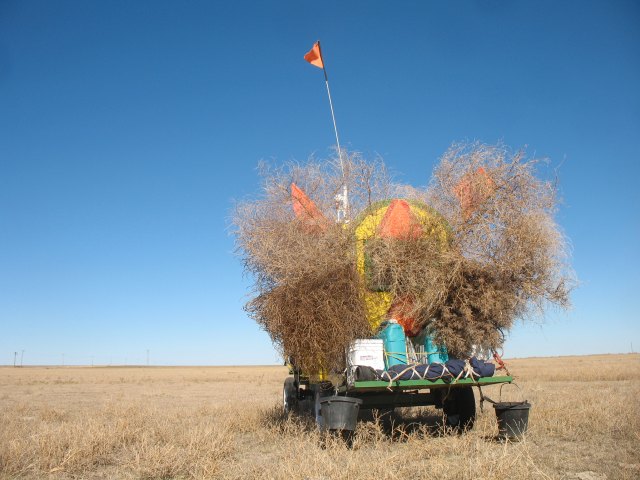-
Posts
2,717 -
Joined
-
Last visited
-
Days Won
91
Content Type
Forums
Gallery
Store
Everything posted by LarryF
-
Two comments from a very biased fanatic: 1. There is plastic and there is plastic. Gordon told me, that he bent the clip and battery door until it scared him and he quit. However, the replacement parts are cheap enough and easy enough to install, to keep around as spares, even if it is for years. 2. Lectro is a small volume company building many items in quantities of ten to one hundred at a time. The Korean partner (IFBlue) makes items in the thousands at a time and they build for multiple companies. Their costs are proportionaly lower. If Lectro built $500 smart phones in Rio Rancho, they'd be $10,000 even on a fire sale. Best Regards, Larry Fisher
-
Hi Paul, For further trouble shooting, what is the actual wiring of the mic? Best Regards, Larry Fisher
-
First, turn off the F8 so it won't distract you!!! Set the gain on the LMa according to the manual: 3) Prepare the signal source. Position a microphone the way it will be used in actual operation and have the user speak or sing at the loudest level that occur during use, or set the output level of the instrument or audio device to the maximum level that will be used. 4) Use the and arrow buttons to adjust the gain until the –10 dB glows green and the –20 dB LED starts to flicker red during the loudest peaks in the audio. Set the output on the 411 to max. It won't overload. Now turn on the F8 and set the gain for your desired output level. Setting the transmitter gain should be independent of any other setting for gain or level in your system. Set the transmitter first and then raise or lower the mixer or recorder gain for your desired levels, leaving the transmitter alone. Best Regards, Larry Fisher
-
The "rear" of the bowtie is like the rear of a dipole; the same gain as the "front" of the dipole. The nulls are inline with the ends of the two elements. Draw a line from center of the end of one bowtie paddle to the center of the opposite paddle. That line is the null of the bowtie. It will be very difficult in a bag to locate other antennas in that null. A bowtie is "just" a wider bandwidth dipole. See this data sheet: https://www.lectrosonics.com/sna600a-antenna.html#data-sheet Best Regards, Larry Fisher
-
You can get the antenna away from the recorder using this antenna: https://www.lectrosonics.com/accessory-links/product/acoaxtx-specify-block.html This co-ax antenna has a "built in" ground plane. Best Regards, Larry Fisher
-
The important point of the story was since the Subway tuna was cooked, the DNA was altered to the point they couldn't tell what kind of fish it was from. That and fishermen tend to call the fish they caught that which will bring the highest price. Best Regards, Larry Fisher
-
Typically Lectro has fixed designed in problems at no charge. I can't imagine this isn't covered. Check with service. Best Regards, Larry Fisher
-
Lectro has a hardware fix for the problem. 1 800 821-1121
-
Wes, our production manager, said long ago, "If you design an 'Idiot Proof' device, Mother Nature will just come up with a better idiot." Best, LEF
-
Why would we? We don't make any money on selling software, firmware or mushware. I talked to Gordon at lunch and he said there is no easy way to permanently brick a unit with serial commands that isn't easily fixed with the usual downloads from the Lectro site. If you can play with the commands to make the SRc more useful, Babbage bless. Gordon will post here about who to talk to at Lectro. At the moment he is getting his hands dirty, remodeling the production offices. Some of the ne'er-do-wells at Lectro took pictures saying, "Now I can show my wife that Gordon does do work here." Best Regards, Larry Fisher
-
Misprint and has been corrected in the manual and spec sheet. LEF
-
Hi Brent, In our extensive walk tests with and without many reflective metal surfaces, the digital systems had as good or better range than the older higher power, digital hybrid units. That was one of the other reasons the newer units have been able to trade increased battery life for reduced power. A good bit of the range improvement is due to different diversity techniques; even more improvement is due to the type of error checking in the modulation, i.e., how missing bits are restored in weak signal conditions. As with all full digital, the audio is either perfectly on or totally off. In my walk tests several years ago, I was very impressed with the softness of the digital dropouts. At NAB, the indication of a digital dropout, was a brief cessation of crowd noise. Since speech has a lot of dead periods, the digital dropouts can go by unnoticed. I assume (that word) they still work that way. Keeping in mind that I am a Lectro Fanatic, my recommendation is try them out for range and see if they meet your expectations. Best Regards, Larry Fisher
-
Several things have driven the differences: One- Rules and laws (FCC and CE) have changed since the SM was designed. This has affected both usable frequencies, power levels and FM deviation for Parts 74 and 15 in the US. Two- Full digital transmission requires both FM and AM components in the RF signal. To stay within the bandwidth rules, neither component can be distorted by the output stage. The FM component of the RF signal is no problem but to keep from clipping (compressing) the AM component it is necessary to use an output stage that is not overloaded, i.e., has headroom. This means a digital 50 mW signal needs an output capable of 150 mW or more. A 250 mW digital signal would require an output that consumes more power than a 750 mW FM design. Battery life and heat become a big concerns. Hence, lower power levels. Best Regards, Larry Fisher
-
Patience, grasshopper.
-
Would work well in the situation you are describing. Lef
-
https://www.lectrosonics.com/press-releases/1282-lectrosonics-introduces-the-dbsm-single-battery-and-dbsmb-dual-battery-bodypack-transmitters.html The times for lithium and alkaline batteries are in the users' manuals on the web site. Since these times are a little longer than for the digital hybrid versions, the NiMh will go longer in these units also. I assume (that word) they will put the NiMh info up later. Believe it or not, if you imply you can use different chemistry batteries in a transmitter, the labs are requiring that they duplicate all the tests. This amounts to 10's of thousands of dollars just to list a different battery type. Sounds like a racket to me since all internal voltages are highly regulated, independent of battery type. Best Regards, Larry Fisher
-
Measure the resistance between the center pin of the antenna's BNC (or SMA) connector and the connector shell with a multimeter. If you don't have one, you can buy cheap multimeters for for $11 and up on Amazon. Everyone needs a multimeter. The reading will be several Ohms (lead resistance) if it is a short or very high reading (greater than 10,000 Ohms) if it is open. Multimeters measure DC resistance which is what an antenna bias supply is. If the reading is greater than a thousand Ohms, the antenna won't short the bias supply. This measurement is not the antenna impedance (universally 50 or 75 Ohms) since that is an AC, not DC, impedance at RF frequencies. Best Regards, Larry Fisher
-
-
Open (high DC impedance)? , not shorted (few Ohms of resistance) ? Seems backwards. LEF
-
Count me as a "don't". I have trouble with the zeros and ones on power switches. LEF
-
Check the antenna output and see if it is "open", I.e., not shorted. Most are open circuits at DC and can be hooked to DC bias without needing a DC block. Lef
-
The best version ever: https://www.bing.com/videos/search?q=simpsons+paint+your+wagon+episode&docid=608024252287692810&mid=69C117A6D8259D49F0A169C117A6D8259D49F0A1&view=detail&FORM=VIRE
-
Here's a half hour experiment that will tell you more than all the brainpower on this forum: put the bowties a foot in front of your bag in free air and record a walk with the transmitter in a straight line. Announce distances as you walk such as counting your steps. You can also announce landmarks as a double check. Go far enough that you will have dropouts. Now, on the same frequency and with the same transmitter position, try the bowties in your proposed positioning. Compare the two recorded results. Then you can tell us if this is a good idea or not. And you won't have to wait a month. Best Regards, Larry Fisher
-

.png.279748a58a2b862b7aa5f3b84126e232.png)





